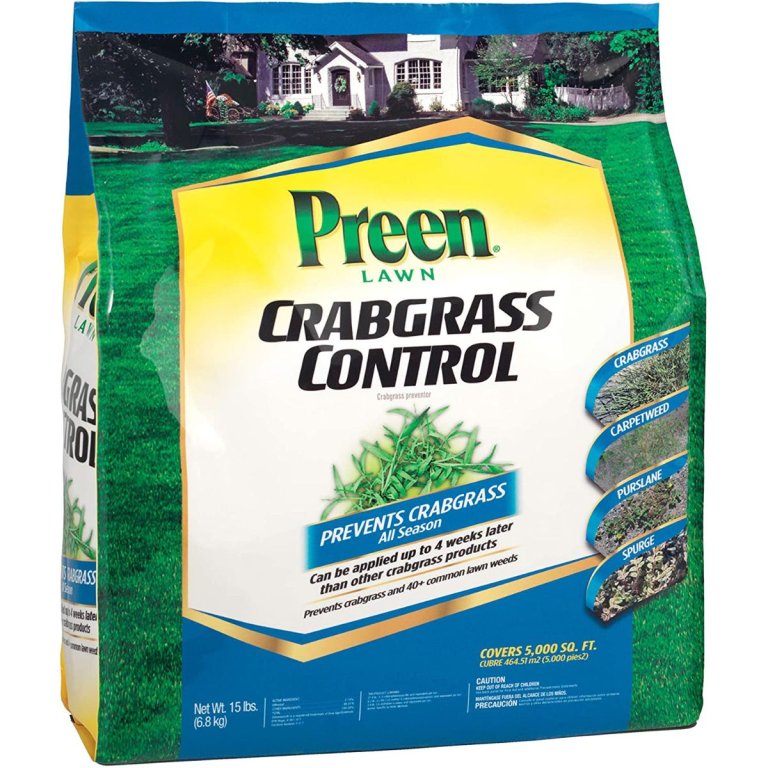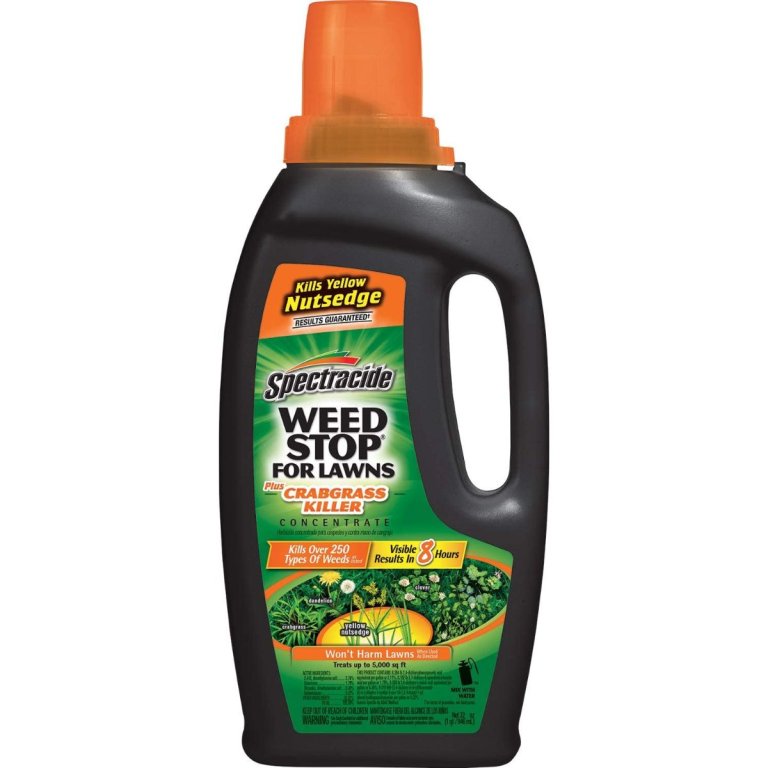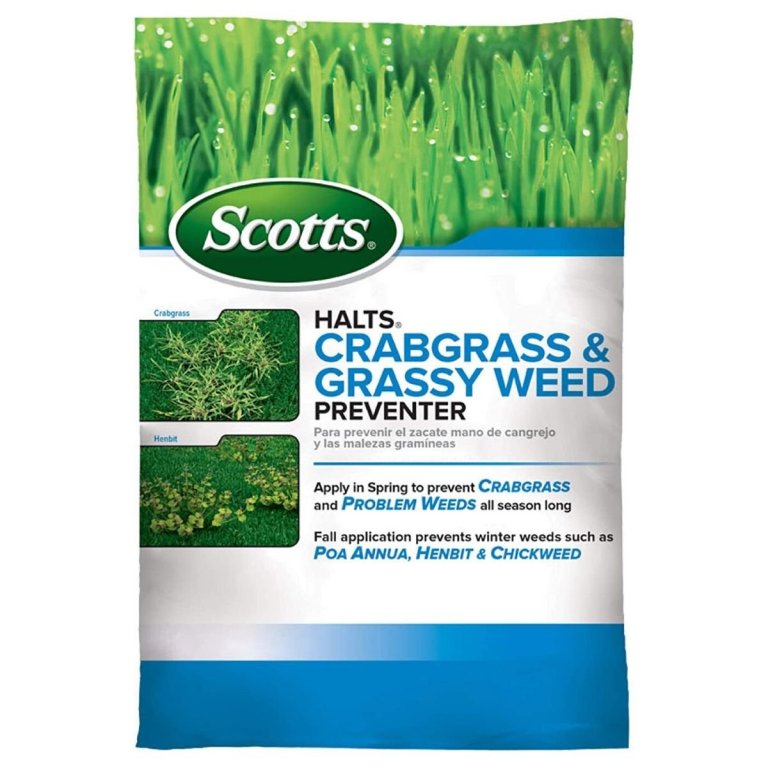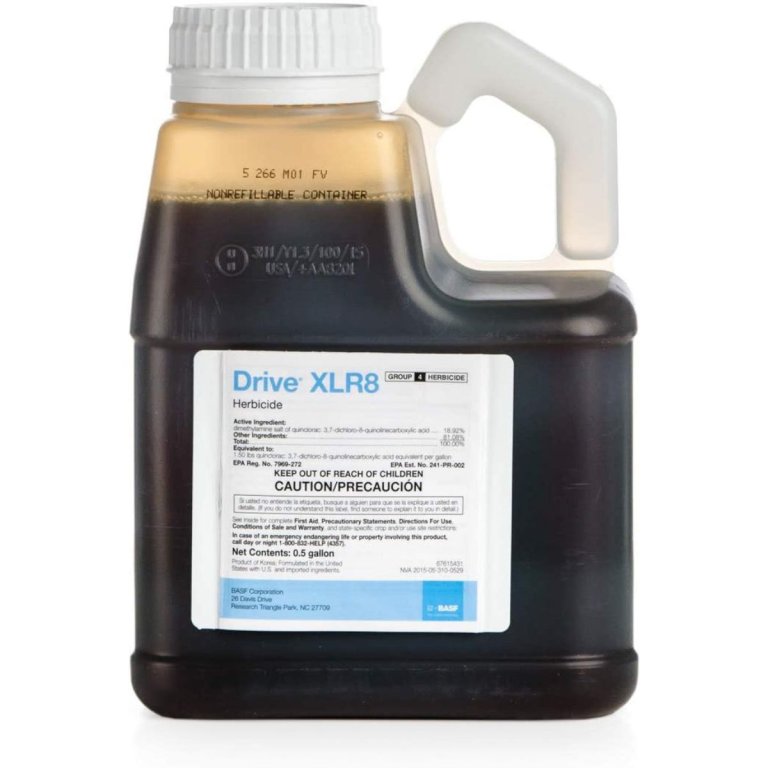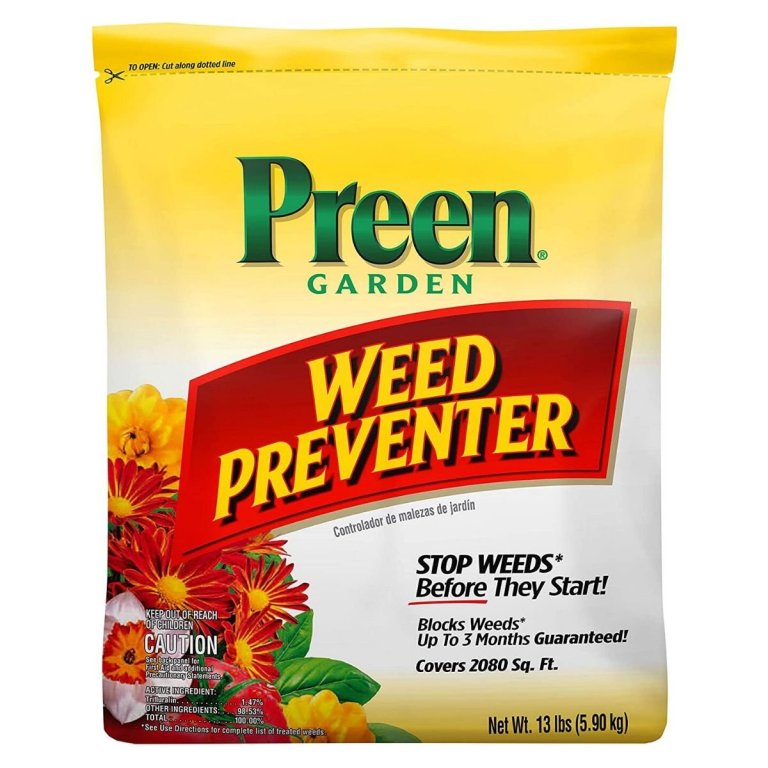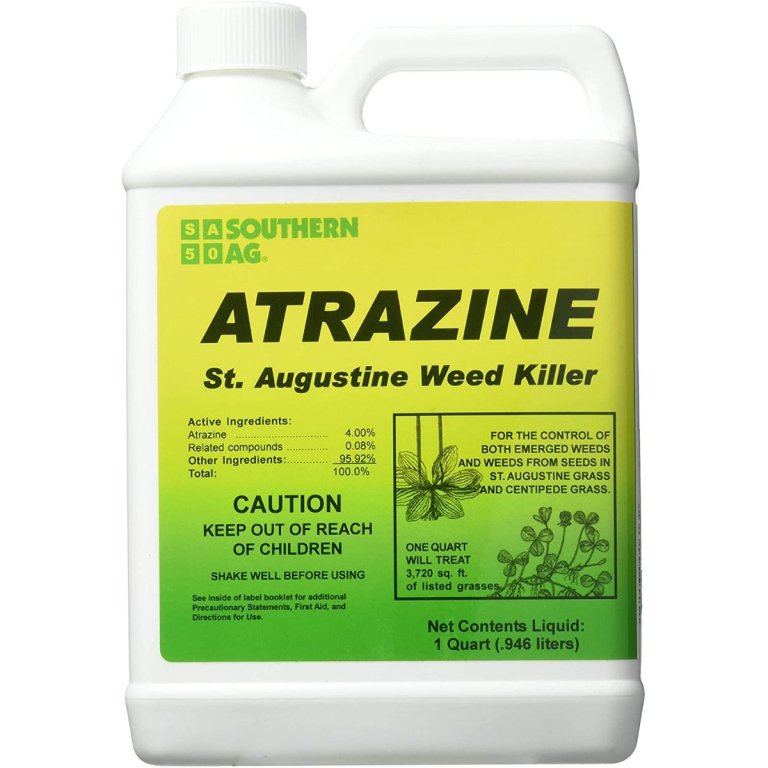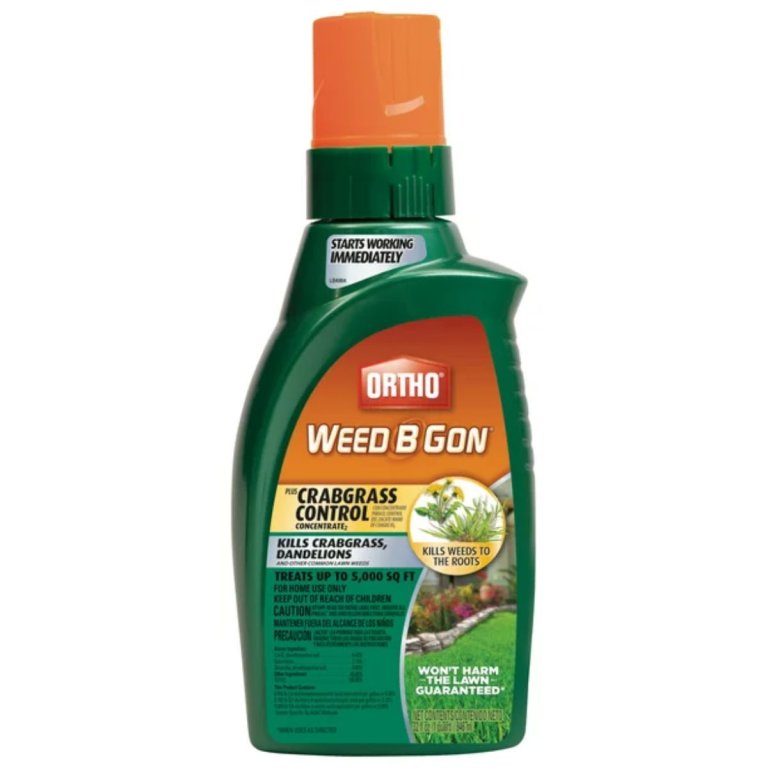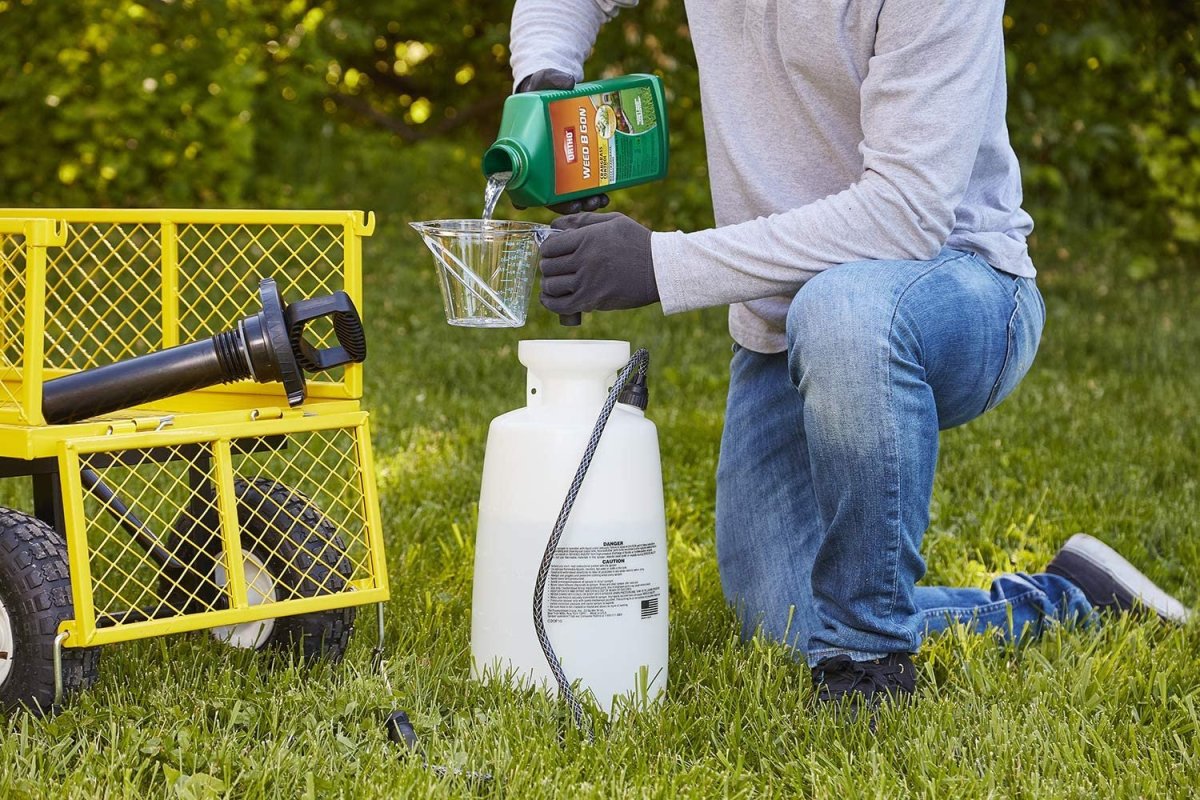
We may earn revenue from the products available on this page and participate in affiliate programs. Learn More ›
Crabgrass gets its name from how it grows—low to the ground with stems that radiate out from the center of the grass clump, resembling crab legs. When it comes to battling crabgrass on the lawn, the odds are stacked in the weed’s favor:
- It germinates when soil temperatures reach between 55 and 65 degrees Fahrenheit, the average temperature during the spring and fall seasons in most areas.
- Ungerminated seeds live in the soil for up to 30 years before sprouting.
- A single crabgrass plant can produce 150,000 seeds during the growing season.
- The weed can grow vigorously in hot, dry conditions.
- It favors the thin and bare spots on your lawn.
But, the best crabgrass killer for your lawn will depend on when you apply the product and how bad your crabgrass infestation gets. Read on for our guide to navigating the available options and our top recommendations for the best crabgrass killers.
- BEST OVERALL: Preen Lawn Crabgrass Control
- BEST BANG FOR THE BUCK: Spectracide 511072 Weed Stop for Lawns + Crabgrass
- BEST PRE-EMERGENT: Scotts Halts Crabgrass and Grassy Weed Preventer
- BEST POST-EMERGENT: BASF Drive XLR8 Crabgrass Herbicide
- BEST FOR FLOWER BEDS: Preen Garden Weed Preventer
- BEST FOR CENTIPEDE GRASS: SOUTHERN AG ATRAZINE St. Augustine Weed Killer
- BEST FOR ZOYSIA GRASS: Ortho Weed Be Gon Plus Crabgrass Control Concentrate
- HONORABLE MENTION: Tenacity Herbicide
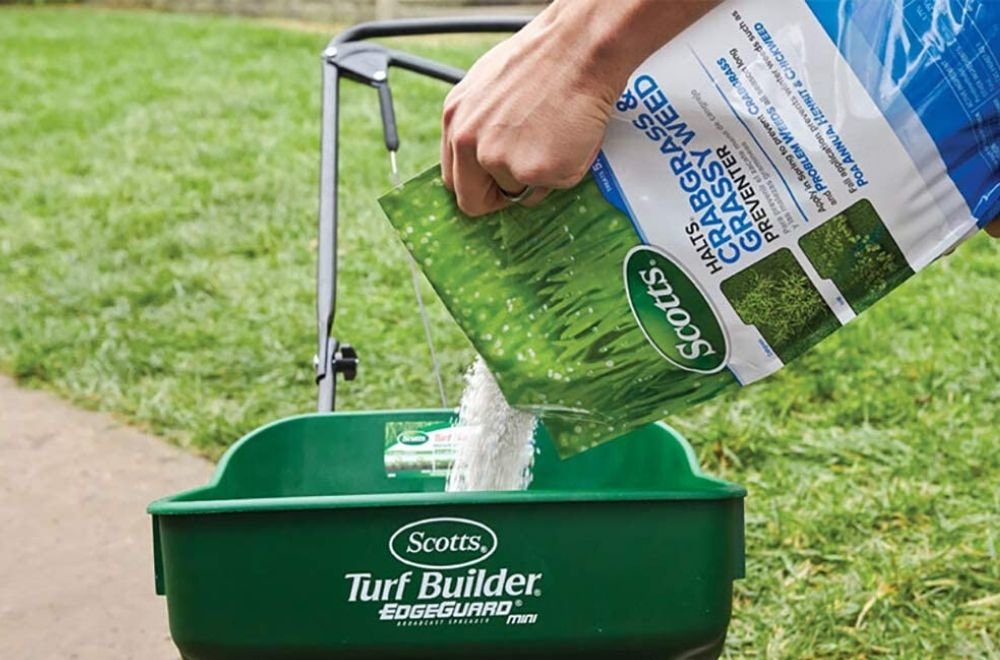
Types of Crabgrass Killers
There are two types of crabgrass killer. The preventive type keeps seeds from germinating and the other type kills mature plants. The best overall product will take care of crabgrass and other weeds that are choking out your lawn. However, it also depends on the time of year that you plan to tackle the weed.
Pre-emergent Herbicides
Pre-emergent herbicides, or weed preventers, stop weed seeds from germinating. When properly applied, they do the job of controlling annual weeds—those that grow from seed each year and then die at the end of the growing season. Pre-emergents do not kill existing weeds.
The timing of the pre-emergent application is very important. Homeowners must apply the herbicide when the weed seed is just about ready to germinate. If the herbicide goes on too early, before the soil temperature warms up enough, the pre-emergent will dissipate before it can complete the job. Applying pre-emergents after the seeds germinate will fail at controlling the target weed.
In areas with long growing seasons, crabgrass can germinate for a long season as well. Pre-emergent herbicides have a defined effectiveness period, so it might become necessary to apply pre-emergent herbicides several times per season to keep the area weed-free.

Post-emergent Herbicides
Post-emergent herbicides kill weeds that are present (after they have emerged from the seed). They prove most effective for tough-to-kill weeds like crabgrass if applied when the weed is young and tender. Mature weeds might require multiple applications, which can also stress the lawn or other plants in the area.
For weedy lawns, the best strategy combines pre-emergent and post-emergent herbicides for a full attack. The pre-emergent halts germination that has not yet occurred while the post-emergent herbicide kills the existing weeds. Again, it might take multiple applications to kill weeds like crabgrass, depending on the time of year, weather conditions, weed maturity, and other site-specific conditions.
What to Consider When Choosing the Best Crabgrass Killer
Selecting the best crabgrass killer for your lawn depends on several factors. Do you want a product to kill several types of weeds or target crabgrass specifically? Will you apply the herbicide in the growing season or during its dormant season? Homeowners should consider whether they want to kill crabgrass in an established lawn or a recently seeded one. A final part of the decision boils down to how many square feet you need to treat. Consider the options below before selecting the best crabgrass killer for your needs.
Selective vs. Nonselective
Herbicides come as either selective or nonselective formulas. Selective herbicides control specific weed categories, like “grassy weeds” or “broadleaf weeds.” The ingredients in these kinds of weed killers should be safe for nontarget plants like lawn grass while killing target plants like dandelions and crabgrass.
Always read labels on selective herbicides to be sure they will work for you. A product labeled as a “grassy weed killer” may or may not control crabgrass, and it may or may not be rated for use in the area you plan to apply it.
Nonselective herbicides kill all types of plants. These are useful in areas where you do not want plants, like mulched tree rings or driveway cracks. Nonselective weed killers also can help in preparing for a landscape renovation, like laying new sod or creating a new flower bed.
Application Method
Herbicides are available as either liquid sprays or dry granules. Granules are easy to apply evenly with a properly calibrated lawn spreader, and any leftover product is simply stored in a cool, dry location until its next use. Pre-emergent or post-emergent weed-and-feed applications for lawns often come as granules.
Liquid sprays prove handy for broadcasting over large areas with a hose-end sprayer or spot treating small areas with a tank sprayer or trigger bottle. They sell as concentrated forms or ready-to-spray liquids. Ready-to-spray herbicide is convenient and minimizes the homeowner’s exposure to the chemical by eliminating the mixing requirement.
When spraying liquids, users must be cautious about wind speed and direction to avoid spray drift that can damage plants not in the target area. Plan a “route” to avoid walking through recently treated areas and then tracking the chemical elsewhere.
Warm vs. Cold Climate
Temperature controls the target weed and the effectiveness of the weed killer. Weeds are most susceptible to herbicides while they are actively growing. Crabgrass seeds germinate when the soil warms to about 55-degrees in the spring. In summer, the crabgrass plant matures and produces more seed until it dies when cold weather arrives.
A single spring application of pre-emergent might be sufficient to eliminate crabgrass in a cold climate location. In a warm climate area, using pre-emergent repeatedly throughout the growing season, if needed, along with spot treating with post-emergent herbicide effectively controls crabgrass.
Our Top Picks
With those key features and shopping tips in mind, we’ve narrowed the market to its top-rated products. One of these seven recommendations for the best crabgrass killer should suit your needs.
Best Overall
Preen Lawn Crabgrass Control
Pros
- Dual-action formula
- Works for up to 4 months
- Suitable for cool- and warm-season grass types
- Ample quantity provided
Cons
- Should not be used on freshly seeded grass
- Pricey compared to similar options
Product Specs
- Type: Pre-emergent/post-emergent
- Form: Granules
- Selective vs Nonselective: Nonselective
- Warm vs Cold Climate: Both
- Coverage Area: 5,000 square feet
Preen has manufactured lawn and garden products for consumer yards, professional sports turf, landscape, and golf course markets since 1947. If you can’t decide between pre- or post-emergent crabgrass killer, get one that can do both jobs!
Preen Lawn Crabgrass Control provides pre-emergent control of crabgrass as well as controlling or suppressing other broadleaf weeds for up to four months when applied before seeds germinate. It’s safe to use on most cool- and warm-season grasses, including St. Augustine and zoysia grass.
Unlike most pre-emergents, Preen Lawn Crabgrass control works when applied to lawn grass for up to four weeks after crabgrass germinates, providing post-emergence control of seedling crabgrass. Do not apply this product on a recently seeded lawn, because it will prevent grass seeds from germinating. For best results, apply in the spring or fall before weed seed germination to control weeds in established yards.
Get the Preen crabgrass control at Amazon, Walmart, and The Home Depot.
Best Bang for the Buck
Spectracide 511072 Weed Stop for Lawns + Crabgrass
Pros
- Works on over 470 weed varieties
- Works in just 5 hours
- Dries in 3 hours
Cons
- May cause some discoloration
Product Specs
- Type: Post-emergent
- Form: Liquid
- Selective vs Nonselective: Selective
- Warm vs Cold Climate: Both
- Coverage Area: 5,000 square feet
Removing weed and crabgrass from your lawn shouldn’t have to break the bank. The Spectricide 511072 Weed Stop for Lawns + Crabgrass is made to kill over 470 weed varieties to the root including crabgrass, dandelion, chickweed, and more in just 5 hours. This pick does not harm the existing grass you have and dries in just 3 hours with a rainproof barrier.
This selective, post-emergent crabgrass killer comes with enough quantity for 5,000 square feet of lawn and is safe to apply on fescue, Kentucky bluegrass, perennial ryegrass, zoysia, Bermuda grass, and Buffalo grass. You may notice that some grass types may discolor after application, but after the crabgrass is dead this discoloration will fade.
Get the Spectricide weed killer at Amazon, Walmart, and Lowe’s.
Best Pre-Emergent
Scotts Halts Crabgrass and Grassy Weed Preventer
Pros
- Can be used from Spring to Fall
- Prevents crabgrass, bluegrass, and chickweed
- Withstands rain, snow, and freezing weather
Cons
- Does not kill mature crabgrass
- Should only be applied on dry grass
Product Specs
- Type: Pre-emergent
- Form: Granules
- Selective vs Nonselective: Nonselective
- Warm vs Cold Climate: Both
- Coverage Area: 5,000 square feet
Prevention is the best cure when it comes to eradicating crabgrass. Scotts is a leading manufacturer of consumer lawn, garden, and pest control products. The company designed Halts Crabgrass and Grassy Weed Preventer to block weed seeds from germinating in the spring and fall. They also made it safe for all types of established lawns.
Applying this herbicide in early spring when the lawn is dry can prevent the germination of crabgrass and other common lawn weeds before they start to spread. Applying Halts again in the fall prevents the germination of winter weeds such as annual bluegrass (Poa annua) and chickweed. As long as the pre-emergent goes on when the lawn is dry, then rain, snow, or freezing weather will not affect performance after application. Like any pre-emergent, Halts will not kill mature crabgrass but will prevent crabgrass seeds from germinating.
Get the Scotts weed preventer at Amazon, The Home Depot, and Walmart.
Best Post-Emergent
BASF Drive XLR8 Crabgrass Herbicide
Pros
- Suitable for cool and turfgrass varieties
- Water-based formula
- Wipes out weeds in 2 days
- Dries within 1 hour
Cons
- May cause discoloration of grass
- May require multiple applications for mature crabgrass
- Pricey
Product Specs
- Type: Post-emergent
- Form: Liquid
- Selective vs Nonselective: Selective
- Warm vs Cold Climate: Cold
- Coverage Area: ½ acre
If your lawn is infested with common weeds and crabgrass, look no further than the BASF Drive XLR8 Crabgrass Herbicide. This post-emergent, selective herbicide is made for bermudagrass, bluegrass, zoysia, ryegrass, buffalo grass, and even some turfgrasses. Plus, it is water-based making it absorb quickly into stems and roots.
Instead of getting on your hands and knees and pulling weeds from the roots, this herbicide can wipe out over 1 acre of weeds within just 2 days with its ½-gallon quantity. Though it isn’t fully moisture-resistant, it dries within 1 hour making it withstand rainfall.
Get the BASF Drive XLR8 on Amazon or at Sears.
FOR USE IN FLOWER BEDS
Preen Garden Weed Preventer
Pros
- Safe to use around 200 flower varieties
- Works for up to 3 months
- Works on many broadleaf garden weeds
- Affordable
Cons
- Not suitable for use on lawns
- Does not kill existing weeds
Product Specs
- Type: Pre-emergent
- Form: Granules
- Selective vs Nonselective: Nonselective
- Warm vs Cold Climate: Unlisted
- Coverage Area: 2,080 square feet
Imagine having a weed-free flower bed. Pre-emergents will take care of crabgrass in garden beds, along with other annoying weeds. Preen is the go-to brand for weed preventives that are safe for use around more than 200 established flowers, vegetables, trees, and shrubs. Preen Garden Weed Preventer works best when applied in spring after spreading mulch on flower and shrub beds and before weeds start growing.
If a gardener forgets to apply the preventive before the crabgrass and weeds pop up, adding it later works, with a few required steps before applying. The first step is to remove existing weeds, followed by mulching the area, applying the Preen product, and then watering it to activate. The herbicide will block common broadleaf garden weeds such as chickweed, knotweed, purslane, and thistle, as well as grassy garden weeds like crabgrass, foxtail, and bluegrass, for up to three months.
Get the Preen weed preventer at Amazon, Lowe’s, and Walmart.
Best for Centipede Grass
SOUTHERN AG ATRAZINE St. Augustine Weed Killer
Pros
- Can be used during dormant and growing seasons
- Only requires 2 treatments per year
- Ample quantity provided
Cons
- Only safe for centipede and St. Augustine lawns
- Should not be used in hose-end sprayers
Product Specs
- Type: Post-emergent
- Form: Liquid
- Selective vs Nonselective: Nonselective
- Warm vs Cold Climate: Warm
- Coverage Area: 3,720 square feet
SOUTHERN AG has produced a large variety of insecticides, herbicides, fungicides, plant growth regulators, safety equipment, and more since 1930. Warm-season grasses, such as centipede and St. Augustine grasses, are normally sensitive to herbicides. Not many large manufacturers have products that are safe to use on these delicate Southern grasses, but SOUTHERN AG uses the active ingredient atrazine, which is safe to use on both centipede and St. Augustine lawns.
SOUTHERN AG weed killer goes on the grass during both dormant and growing seasons. The best results come from applying it in early spring or dormant periods when weeds are small or have not emerged. The manufacturer recommends limiting applications to two treatments per year.
Get the Southern AG ATRAZINE on Amazon.
Best for Zoysia Grass
Ortho Weed Be Gon Plus Crabgrass Concentrate
Pros
- Safe for delicate grass types
- Targets broadleaf and grassy weed varieties
- Multiple application types
Cons
- Should be applied on dry grass
- Requires a tank or hose-end sprayer
Product Specs
- Type: Pre-emergent
- Form: Liquid
- Selective vs Nonselective: Selective
- Warm vs Cold Climate: Warm
- Coverage Area: 5,000 square feet
Finding the best post-emergent herbicide that kills crabgrass without hurting the existing lawn can be tricky, especially for sensitive zoysia grass. Ortho makes it easy with Weed Be Gon Plus Crabgrass Concentrate. The product is safe to use on zoysia grass and is a good value. Weed Be Gon targets broadleaf weeds and grassy weeds and works well on any warm-season grass that needs a lot of weed control.
For a large infestation of crabgrass, it’s best to wait until the spring or fall and use a pre-emergent herbicide. Ortho Weed Be Gon works best when weeds are small and actively growing and when applied to a dry lawn. For best results, homeowners should use a tank sprayer or hose-end sprayer attachment.
Get the Ortho Weed Be Gone concentrate at Walmart, The Home Depot, and Ace Hardware.
Honorable Mention
Tenacity Herbicide
Pros
- Dual-action formula
- Creates 30 gallons of herbicide
- Kills weeds from the roots upward
Cons
- Should not be used on Bermuda grass, paspalum, zoysia, Kikuyu grass, bentgrass, or poa annua
- Requires dilution first
- Pricey
Product Specs
- Type: Pre-emergent/post-emergent
- Form: Liquid
- Selective vs Nonselective: Selective
- Warm vs Cold Climate: Cold
- Coverage Area: 1 acre
Though it comes with a steep price tag, the Tenacity Herbicide is one of the best crabgrass killers on the market. This small but mighty selective herbicide inhibits photosynthesis and causes grassy weeds to die from the root upwards.
This 2-in-1 formula is a pre- and post-emergent weed killer and works on chickweed, clover, crabgrass, dandelion, and many more. Plus, this 8-ounce pick offers 30 gallons of herbicide per acre and can be applied on Kentucky Bluegrass, centipede, Buffalo grass, fescue, and more.
Get the Tenacity Herbicide on Amazon or at Walmart.
Our Verdict
If you are trying to get rid of crabgrass at any phase of its growth, the Preen crabgrass control could be just the ticket. This versatile pre- and post-emergent granular herbicide is capable of working for over 4 months per application and works on most grass types. Alternatively, for a budget-friendly option, the Spectracide Weed Stop is a post-emergent liquid herbicide that can tackle over 470 weed varieties and is rainproof within 5 hours of application.
How We the Best Crabgrass Killers
These recommendations for the best crabgrass killers include a variety of options to meet the needs of typical users who want to maintain a beautiful residential landscape. We narrowed our research to focus primarily on granular and liquid crabgrass killers, as those are some of the most popular on the market due to their versatility and effectiveness.
We also evaluated these crabgrass killing products based on their compatibility with grass types and other weeds, with most options being nonselective in their killing abilities and safe for warm- and/or cool-season grass types. As for coverage, each can tackle spaces of 2,000 square feet or more to kill crabgrass as well as broadleaf weeds. There are a broad number of products made to kill crabgrass that are ranked on our list that can work quickly and have long-lasting effects, but some also have dual-action formulas and are easy to apply.
FAQs
When it comes to using pre-emergent and post-emergent crabgrass killers, timing is everything. Be sure to read the product’s label thoroughly and follow the manufacturer’s directions for the best results. Here are some common questions that arise when using a crabgrass killer:
Q: When is the best time to apply crabgrass pre-emergent?
Apply crabgrass pre-emergent when the soil temperature is around 50-degrees. Killing the weed might require a second application in areas with long growing seasons. Follow the manufacturer’s directions for timing.
Q: Will heavy rain wash away pre-emergent?
No. Rain activates pre-emergent by carrying it into the soil. However, digging and pulling existing weeds after applying the pre-emergent can reduce the product’s effectiveness.
Q: How do you apply a crabgrass killer?
Apply post-emergent crabgrass killer in the morning, on a dry day. Treat only the affected areas of the lawn. Coat the crabgrass evenly.




